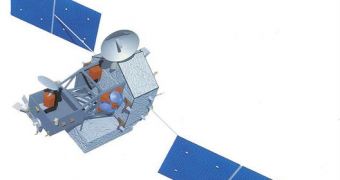An international collaboration of space scientists, featuring experts from the Japanese Aerospace Explorations Agency (JAXA) and NASA, is planning to construct a network of artificial satellites to keep track of global rain and snow patterns. The Global Precipitation Measurement, or GPM, mission will produce results that will help scientists gain a deeper understanding of our planet's climate, weather, and hydrometeorological processes. As part of these ongoing efforts, NASA has awarded a new contract to Boulder, Colorado-based Ball Aerospace and Technology Corporation, for the construction of the GPM Microwave Imager instrument Flight Unit 2, the agency announces.
“Under this contract, Ball Aerospace and Technology will manufacture, test and deliver the GMI instrument Flight Unit 2, support instrument integration on the spacecraft and provide launch and post-launch support. The GMI Flight Unit 2 will be identical to the GMI Flight Unit 1 and will be manufactured in series with GMI 1. GMI 1 is scheduled to fly in 2013 on the GPM Core Observatory. This is a cost-plus-award fee, incentive fee contract in the amount of approximately $48.5 million with a period of performance from Oct. 9, 2009, through March 31, 2016,” NASA officials explain.
The GMI is essentially a microwave radiometer. However, it is a highly-advanced piece of equipment, featuring multi-channel, conical-scanning abilities that allow it to provide scientists with near-complete coverage of the planet. It is extremely efficient at measuring atmospheric moisture, producing datasets from which a host of other scientific data can be derived or inferred. NASA has set the launch date for the GMI Flight Unit 2 sometime in 2014, on a satellite that will most likely be provided by JAXA. The instrument's main mission will be to improve hurricane and mid-latitude storm monitoring.
“In any given area, the amount of precipitation can vary significantly over a short time span. In the summertime, for instance, a single thunderstorm lasting just 20 minutes will produce 2 inches of rain over a city, but leave the adjacent town just 10 miles away unscathed. During the winter, heavy snows downwind of the US Great Lakes often accumulate to several feet, but along a narrow corridor only a few tens of miles wide. All of these factors make precipitation difficult to quantify. Reliable ground-based precipitation measurements are difficult to obtain over regional and global scales because most of the world is covered by water and many countries are not equipped with precision rain measuring sensors,” NASA officials explain of why the GPM mission is necessary.

 14 DAY TRIAL //
14 DAY TRIAL //